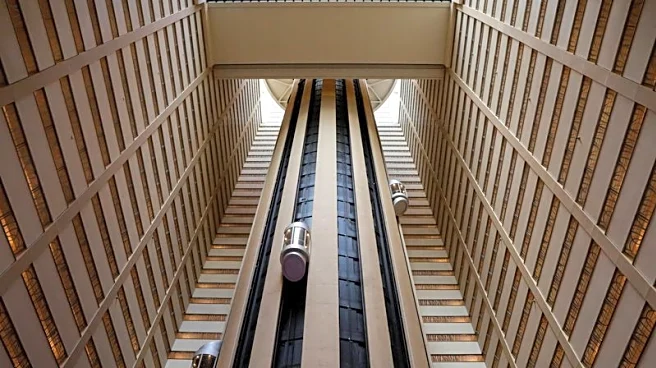What's Happening?
Building Design+Construction has released its 2025 Giants 400 Report, highlighting the top architecture and architecture engineering (AE) firms specializing in senior living facilities in the United States.
Leading the list is Perkins Eastman, followed by Hord Coplan Macht, Arcadis North America, SFCS, and Moseley. These firms have been recognized for their significant contributions to the design and construction of senior living facilities, a sector that continues to grow as the population ages. The report provides a detailed ranking based on the firms' revenue and project involvement, showcasing their leadership in the industry.
Why It's Important?
The ranking of these architecture firms is significant as it reflects the growing demand for senior living facilities in the U.S., driven by an aging population. As the baby boomer generation continues to age, there is an increasing need for well-designed, functional, and sustainable living spaces for seniors. The firms listed in the report are at the forefront of addressing these needs, influencing trends in design and construction within the sector. Their work not only impacts the quality of life for seniors but also shapes the future of senior living environments, making them more accessible and accommodating.
What's Next?
As the demand for senior living facilities continues to rise, these top firms are likely to expand their portfolios and innovate in design and construction techniques. The focus may shift towards integrating more technology and sustainable practices into their projects to meet the evolving needs of the senior population. Additionally, other firms in the industry may look to these leaders for inspiration and guidance, potentially leading to collaborations or partnerships aimed at enhancing the quality and efficiency of senior living facilities across the country.
Beyond the Headlines
The emphasis on senior living facilities also highlights broader societal trends, such as the importance of elder care and the need for inclusive design that accommodates various levels of mobility and health. This focus may drive policy changes and increased investment in the sector, as stakeholders recognize the critical role these facilities play in supporting an aging population. Furthermore, the architectural innovations emerging from these firms could influence other sectors, promoting a more holistic approach to community planning and development.












